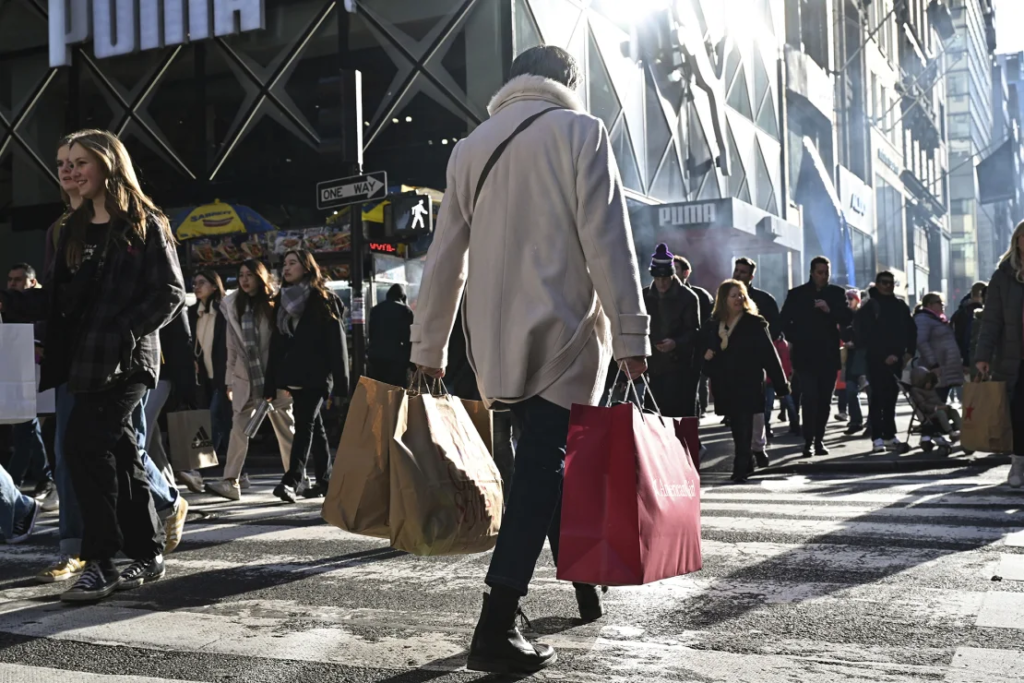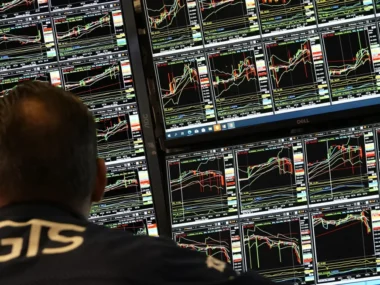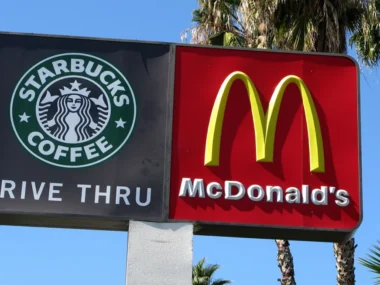How many individuals are included in your holiday shopping list this year? Are you planning to indulge in extravagant purchases or opt for bargains? Will you stay within your budget or consider taking on debt?
These questions are currently receiving significant attention as they offer insights to economists and analysts on the potential holiday season spending and its implications for the overall US economic outlook.
Despite holiday purchases representing a relatively small portion of the economy, they contribute significantly to overall consumer spending, which constitutes over two-thirds of the US Gross Domestic Product (GDP).
Mickey Chadha, Vice President of Corporate Finance at Moody’s Investors Services, notes that holiday spending data reflects the psychological mindset of consumers. He adds that it serves as an indicator of the retail industry’s health, given that most retailers generate the majority of their profits during the holiday shopping season.
During prosperous times when a substantial number of consumers are employed, people tend to be enticed to spend generously on holiday gifts. Conversely, in challenging economic periods marked by elevated unemployment rates, consumers are more inclined to reduce overall spending, particularly on holiday gifts.
Currently, the data indicates a robust position for the US consumer. Adobe Analytics reported a record $9.8 billion in online sales on Black Friday, marking a 7.5% increase from the previous year (not accounting for inflation). Cyber Monday saw even stronger numbers, with consumers spending $12.4 billion, reflecting a 9.6% rise from 2022. During the peak hour, shoppers spent $15.7 million every minute, according to Adobe.
However, there are indications that the trajectory might change. This year, the forecast for dollar sales growth during the holiday season in the United States suggests a slowdown to 3.3%, compared to 6% the previous year. While this is below the pre-pandemic average of 3.9%, and lower than rates seen in recent years, analysts suggest that the slowdown may not be as concerning as it initially appears.
Inflation Mitigation is Contributing to the Situation.
The anticipated deceleration has a valid explanation, according to Aditya Bhave, a senior economist focusing on the United States at the Bank of America. He emphasized that the primary factor behind this is the moderation in inflation and deflation. This trend has been particularly noticeable in various sought-after product categories such as toys, electronics, and apparel.

Holiday shoppers can expect significant price reductions in the electronics sector.
Nevertheless, despite the Consumer Price Index showing a decline in the annual inflation rate to 3.2% in October from 7.7% the previous October, consumers have developed a habit of budgetary restraint. For example, some individuals might delay nonessential expenditures to ensure they have sufficient resources for essential needs like food and gas, or they may seek heavily discounted items to make their money go further. Chadha termed this phenomenon “inflation fatigue” and suggested that it could be a contributing factor to the anticipated slower growth in holiday sales this year. This is already evident in certain holiday shopping statistics.
Shoppers, both online and in physical stores, increased their spending by 2.5% compared to the previous year on Black Friday, as per insights from Mastercard’s SpendingPulse, without adjusting for inflation. However, this marks a significant slowdown from the previous Black Friday, which saw a 12% increase compared to the corresponding day in 2021.
This trend indicates that consumers are opting for more economical alternatives, a phenomenon referred to as “trading down,” according to Tamara Charm, a partner at McKinsey leading the company’s consumer insights hub. Charm noted that after substantial spending growth in recent years, the inclination to trade down is moderating increases in sales, particularly for tangible goods categories, while intangible purchases like travel, fitness, and entertainment are less affected.
On the contrary, Adobe’s data presented a different scenario. If adjusted for inflation, the data would demonstrate even more robust spending growth. Adobe explained that lower prices across a broad spectrum of categories it monitors contributed to the reported spending growth being “driven by net-new demand, not simply higher prices.”
What Implications Does This Have For The Economy In the Year 2024?
The consensus among experts interviewed by CNN is that holiday spending data, regardless of its positive or negative nature, is not a comprehensive representation of the overall US economy. Chedly Louis, the vice president of corporate finance at Moody’s Investors Services, emphasized that it is just a single data point. According to a report coauthored by Louis and Chadha, holiday sales are projected to experience a relatively modest growth of 1% to 3% this year.
Michael Zdinak, the economics director at S&P Global Market Intelligence, highlighted that while holiday spending data might be just one aspect, it establishes a tone for the trajectory of economic growth in the upcoming year. In light of the forecast for holiday sales, Zdinak anticipates some contraction in US economic growth during the fourth quarter of this year. Despite the robust GDP report from the previous quarter, indicating nearly 5% annualized growth, Zdinak expressed surprise at the prospect of further growth considering the prevailing negative economic factors.

Anticipated for 2024 is a deceleration in both US economic growth and consumer spending; however, the consensus among economists is that a recession is not widely predicted.
Charm from McKinsey interprets this season’s holiday sales data as a reliable indicator of whether consumers will persist in moderating spending across various goods. Even if the trend of reduced consumer spending growth extends into 2024, numerous economists are not forecasting a recession for the upcoming year.
Bhave, an economist at Bank of America, explained that their absence of a recession forecast is grounded in the consistent surprise of the consumer’s resilience, expecting this trend to persist. He attributes this expectation to the historically low unemployment rate and the relative insulation of many consumers, particularly those who secured low mortgage rates, from the impact of high interest rates. Nonetheless, it is acknowledged that a significant portion of consumers may experience increased financial constraints in the coming year.











